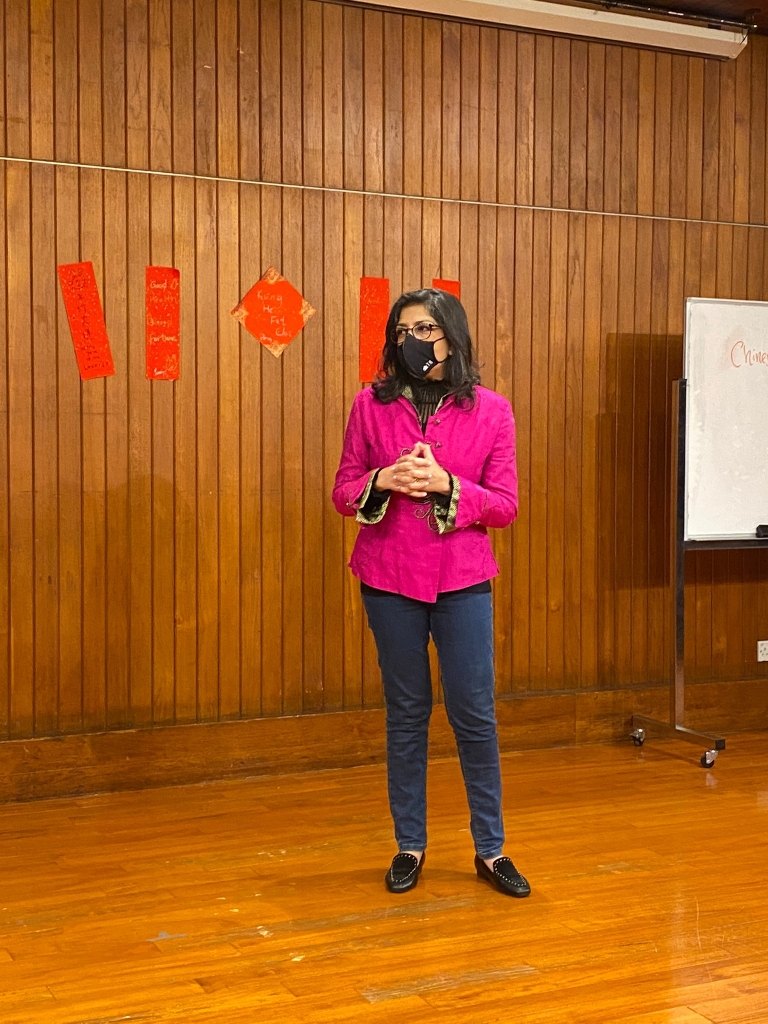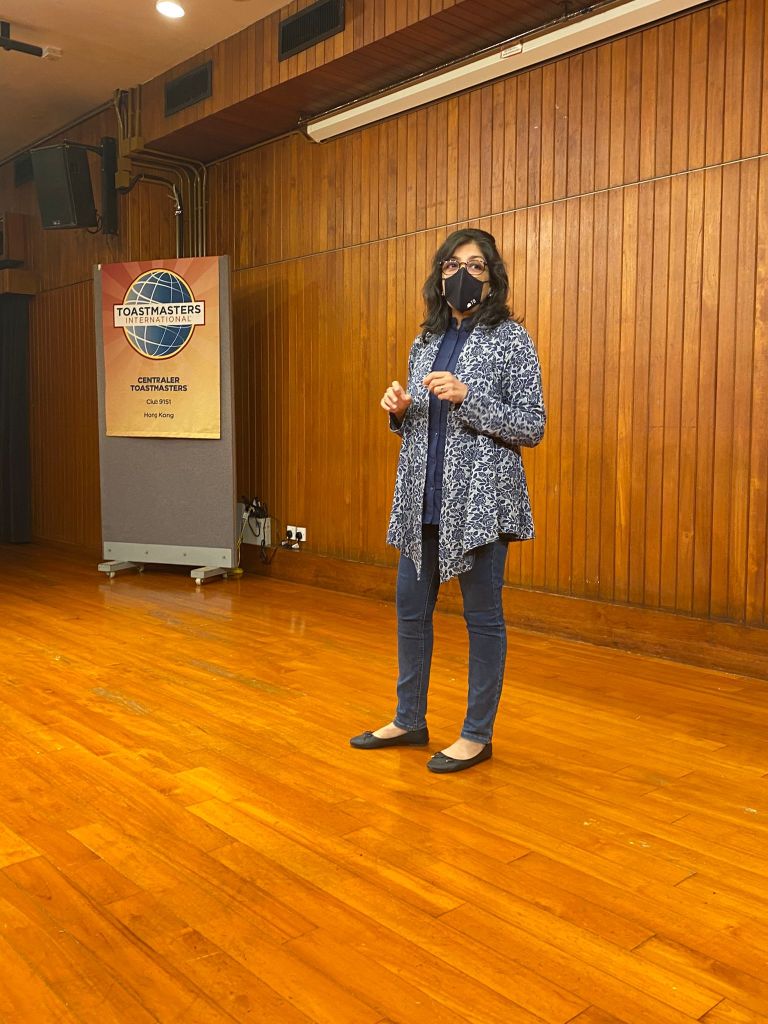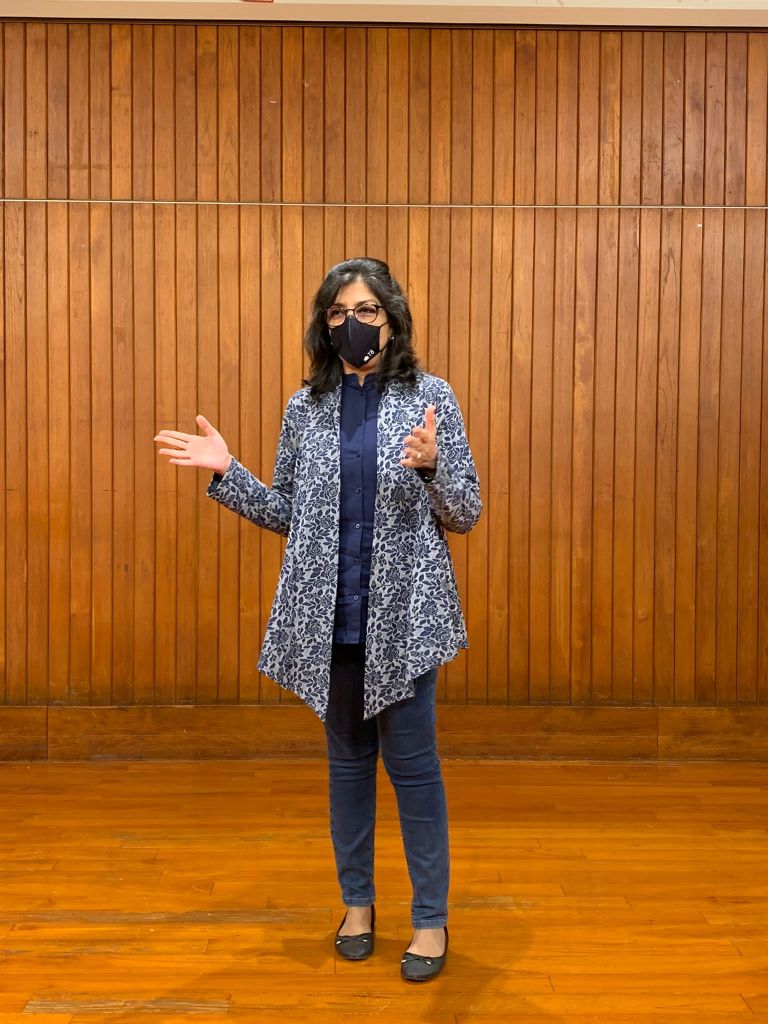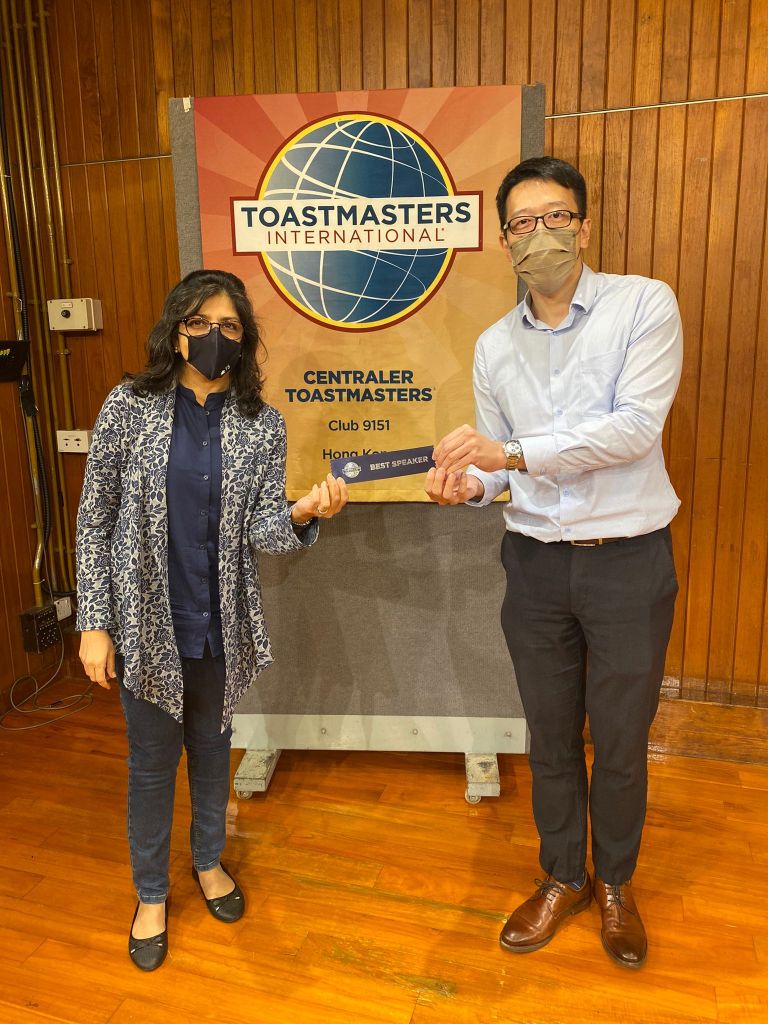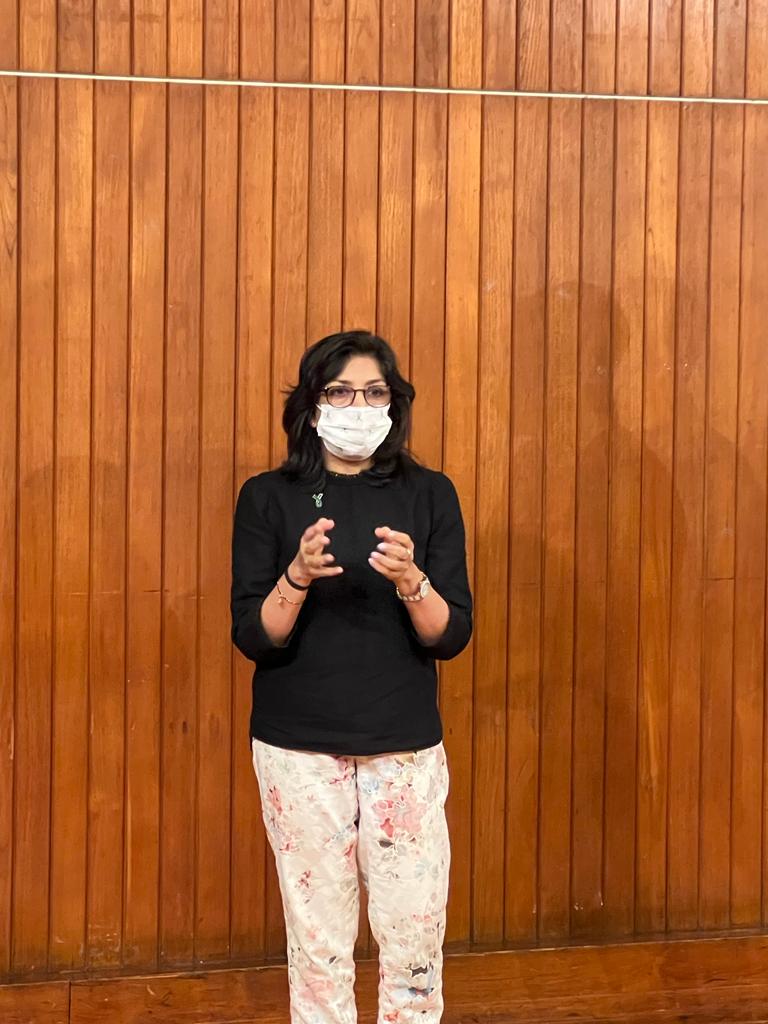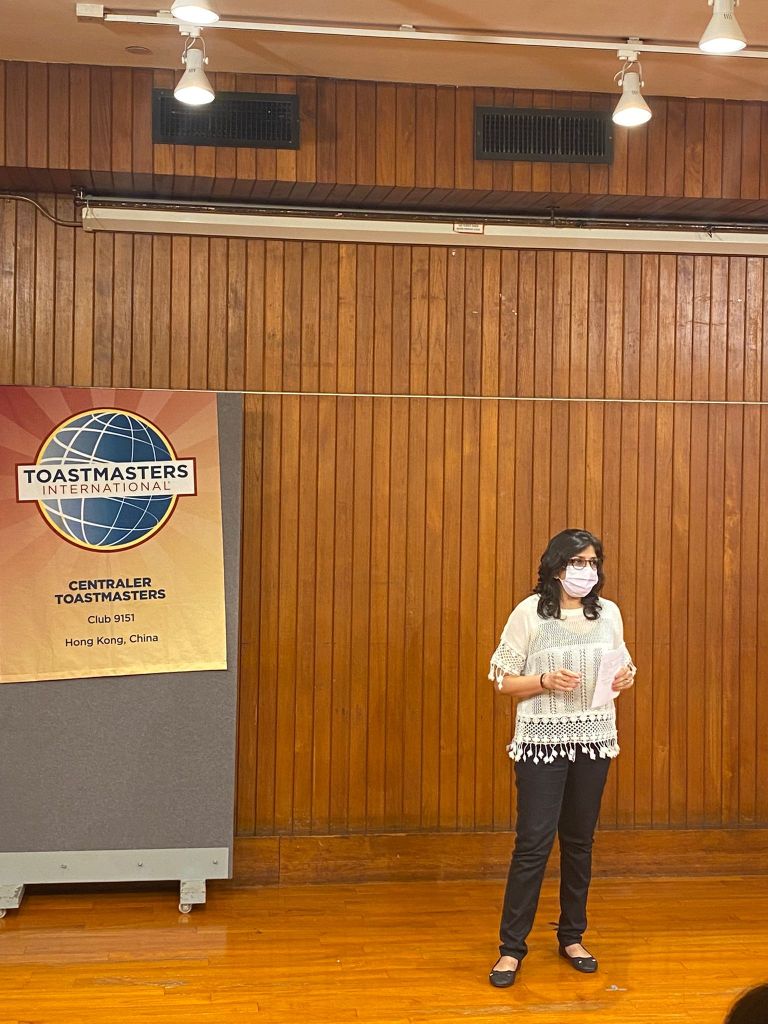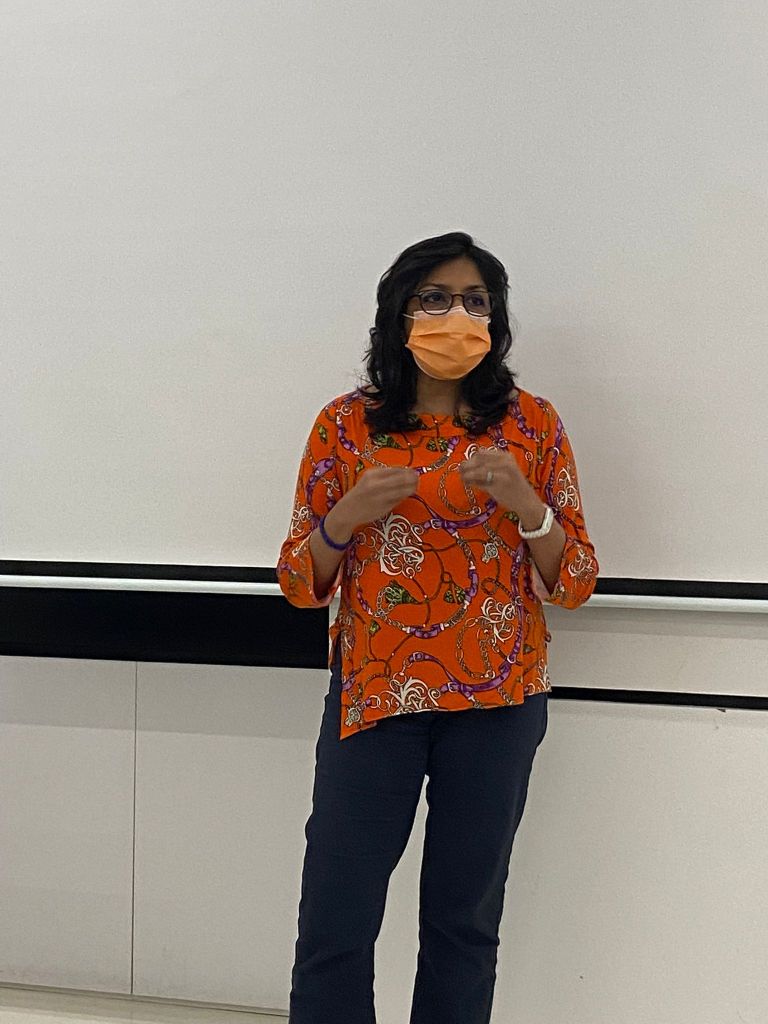Despite the teachings and the learnings from Toastmasters International resources, and the wonderful fellow Toastmaster members evaluations, I still felt there was something missing in the aftermath of giving a speech. I had all the right elements: content, vocal variety, eye contact, gestures…but still i wasn’t satisfied.
I received positive and constructive feedback from peers, and yet I felt that I wasn’t good enough.
This feeling ‘not good enough’ didn’t stem from the low self-esteem issue, it was a logical element of comparing myself with the past speeches that I had delivered. I felt I wasn’t in my element – means I was stuck in some discomfort mode, of delivering a speech like everyone else. It wasn’t the fear of public speaking as much as it was the disappointment in the self that I wasn’t able to figure out a speaker identity.
It was a rational question asking why hadnt I improved after having been a Toastmasters member for over 2 years?
After much reflection, I realised that it was my rhythm – I wasn’t sure what it was. I wanted to have a certain style that would build a connection with the audience.
When I say rhythm it meant an alignment with the content and me. The content has to be the kind that I would feel comfortable delivering. It was not a parroted knowledge dump, but a more personal connect.
Everyone has a personal rhythm. When you set out to pursue a task, you will know intuitively that you have got the process and practice right – it’s the sense of ‘yes, I’ve got the feel of it now!’ And now i can get creative with this identity.
Two trial speeches later, I got the clarity. I checked ‘rhythm’ and I came to realise three elements that mattered to me:
- The content had to resonate deeply with me, so I needed to practice until the content was crisp, simple and yet connectivity existed. I had to get the full value out of the words.
- I needed to clarify the content by writing and rewriting a step by step flow, that was no more than five, and memorise the steps, not the words.
- Add stories to clarify the steps – this adds the feeling element to the content
The key that unlocked my rhythm was that it was important that the words connected with me first, before I connected with the audience.
Once I figured out my ‘mojo’ I polished my ideas, and tried it out at the next few meetings. Failed and tried again, i figured out my mistakes. The next time, I got it right. There was a difference, a more relaxed delivery – better connection with the audience.
While you learn all the techniques, it is ultimately up to you to discover your unique style and refine it with every speech. Toastmasters is a great platform to fail fast, get critiqued, until you figure out what it is that works for you and clicks with the audience. I am ready for Level 4 🙂
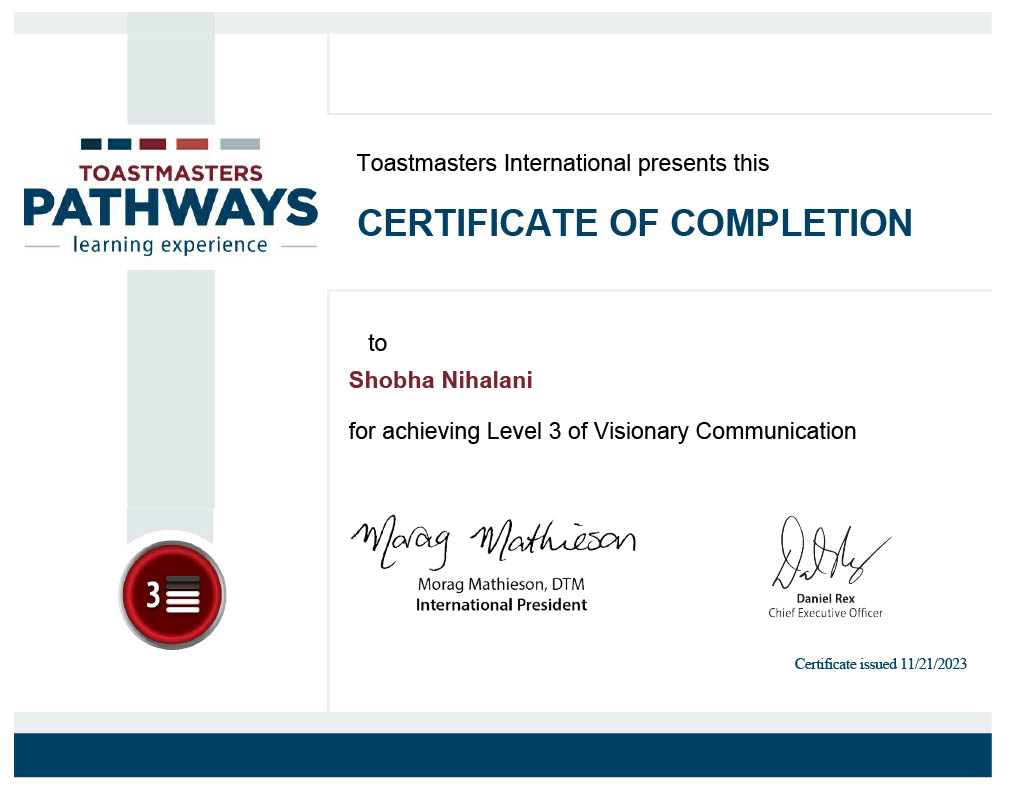
I got my certification too 🙂
